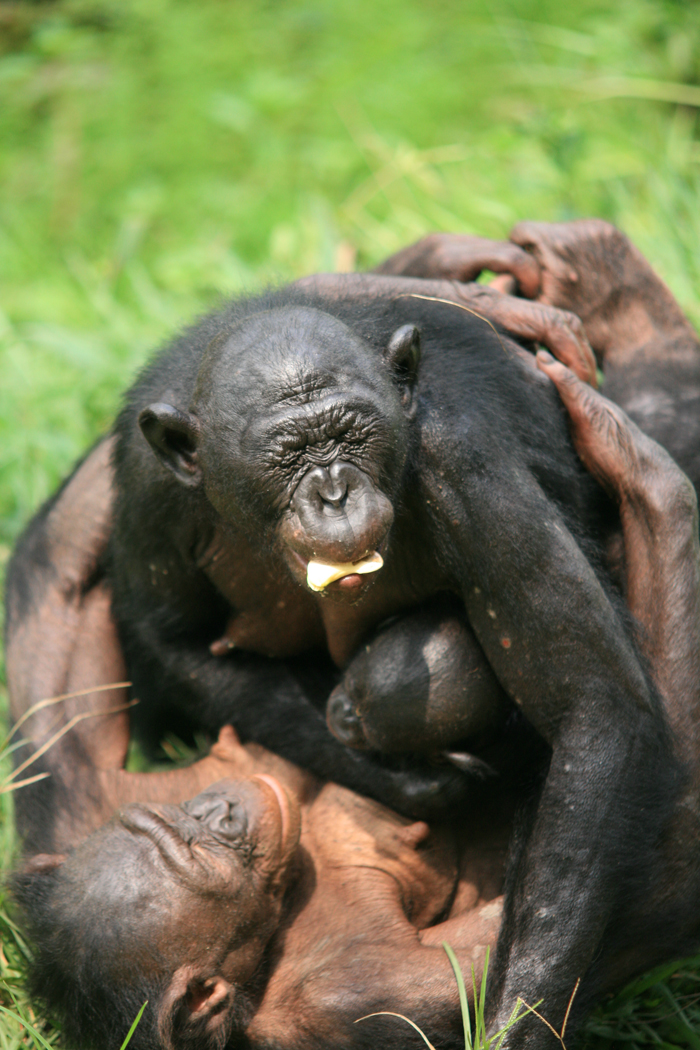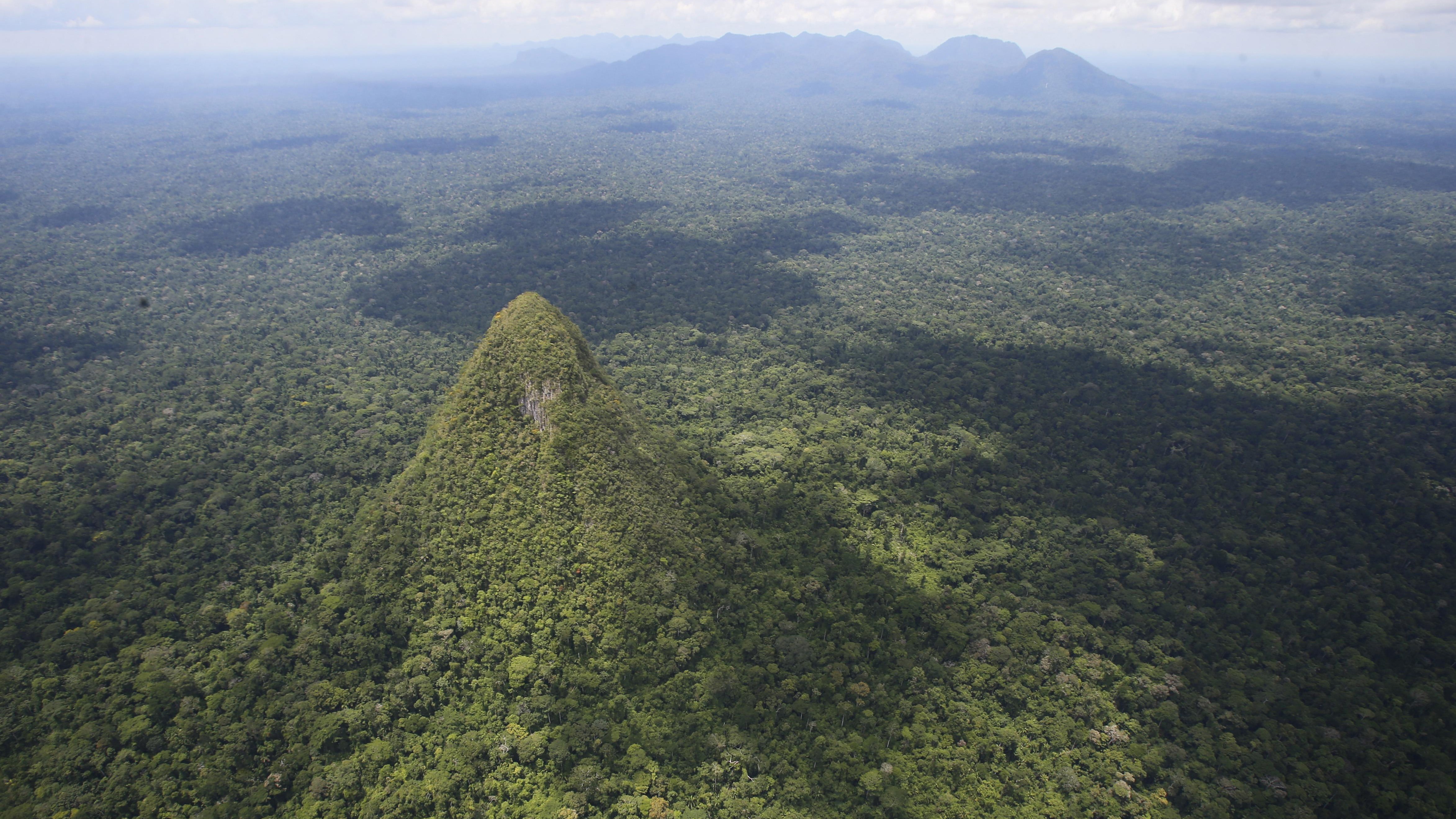
Being Gay Is Natural: Just Ask Bonobos (Op-Ed)

Brian Hare is an associate professor of evolutionary anthropology at Duke University, and Vanessa Woods is the author of "Bonobo Handshake"(Gotham, 20011). Woods and Hare are on the board of the nonprofit Lola ya Bonobo, a sanctuary for orphan bonobos in Congo. The authors contributed this article to Live Science's Expert Voices: Op-Ed & Insights.
Lodja sees Mwanda and shrieks in excitement. They run toward each other with such force that when they embrace, they fall to the ground in each other's arms. Without much foreplay, Lodja grinds her hips against Mwanda and their clitorises rub together with increasing speed and friction. They hold each other tight, cry and shriek, and when it is over, they fall apart exhausted, and lazily snack on some fruit.
There are hundreds of examples of non-reproductive sex among animals, from albatrosses to koalas. But none of these examples can make people quite so uncomfortable as bonobos do. Two bonobo females having sex looks very different than two female albatrosses sitting placidly on their nest. Bonobo sex looks human. [Biologists: Media Sensationalizes Animal Sex]
These primates are so closely related to people that they share 98.7 percent of humans' DNA. Along with chimpanzees, they are humans' closest living relatives. Yet, barely anyone knows what a bonobo is. In a survey by our Hominoid Psychology Research Group survey, only 15 percent of people who had the highest level of education (university) knew that bonobos are great apes. Spell check does not recognize 'bonobo' as a word. But in the debate over whether gay marriage, or any other non-reproductive sexual relationship, is "natural," no other animal holds more importance.
Homosexuality in bonobos is not cultural. When primatolgist Frans de Waal first saw the outlandish sexual acts of bonobos, other scientists remarked that the behavior must have arisen because those bonobos were locked in a zoo. But data gathered from the wild — and wild-born bonobos in captivity — over the past two decades has demonstrated that bonobo sexuality is just part of who they are.
The two bonobos Lodja and Mwanda were part of a study we conducted at Lola ya Bonobo sanctuary in Congo. Like many bonobos at the sanctuary and in the wild, these individuals practiced g-g rubbing, where two female bonobos rub their clitorises together, penis fencing between males, and a myriad of other socio-sexual behavior.

But what set Mwanda and Lodja apart, as well as the other six bonobos in the study, was that they were infants, each younger than 4 years old. They were orphans of the bushmeat trade, and were born in the wild. At Lola ya Bonobo, they were raised with other infants and human substitute mothers. There were no adult bonobos to "teach" them sexual behavior.
Sex for fun in bonobos, and many other animals, plays a social function. There is stress-relief sex, make-up sex and random hook-up sex. Chimpanzees, humans' more violent cousins, do not seem to use sex in this way. They occasionally torture each other, kill strangers and demonstrate other echoes of humanity's dark side. [Bonobos Make Love - Chimps Make War ]
Bonobos, who use sex to resolve conflict, have never been seen to kill each other. They share food. They are more cooperative than chimpanzees. And they are nicer to strangers than they are to friends. To bonobos, a peaceful, sexual existence is the most natural thing in the world.
The author's most recent Op-Ed was "What Does Your Dog Want for Christmas?" All of the Op-Eds by Brian Hare and Vanessa Woods are available in this archive. Follow all of the Expert Voices issues and debates — and become part of the discussion — on Facebook, Twitter and Google +. The views expressed are those of the author and do not necessarily reflect the views of the publisher. This version of the article was originally published on Live Science.
Sign up for the Live Science daily newsletter now
Get the world’s most fascinating discoveries delivered straight to your inbox.










